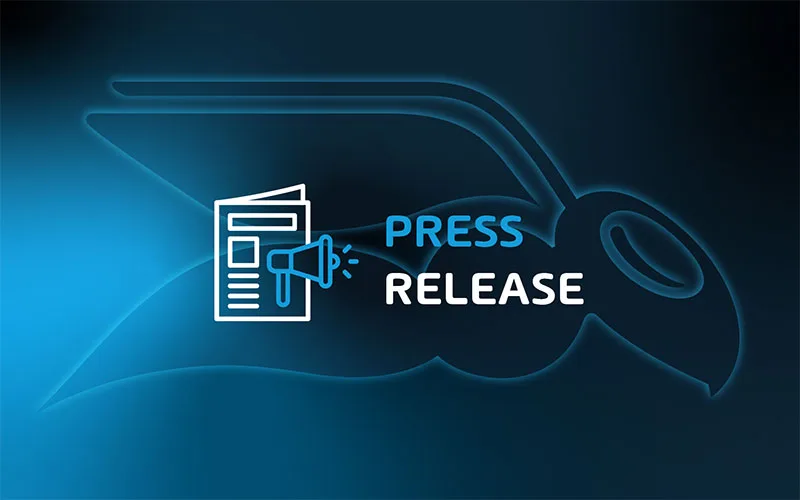

Cloud Computing – where do we go from here?
The experts at Hornetsecurity lead the way with their views on cloud computing in the B2B environment
Quo Vadis IT? Next to “Industry 4.0” and “Internet of Things”, cloud computing is among the most important trends for the industry and medium sized businesses. While it has suffered a setback as a result of the NSA scandal and the related data security and privacy concerns, the experts from Hornetsecurity remain convinced that the cloud will continue to grow. The Hannover-based company has been relying on the cloud principle for its products since 2004. In the following, Oliver Dehning, the Managing Director of Hornetsecurity discusses seven important arguments with regard to the future of cloud computing.
1. Cloud and mobile go hand in hand
Mobile devices are omnipresent these days – and their use will continue to grow. Most apps on these devices need access to backend services. These services must be accessible from the outside, otherwise the mobile access would be cumbersome and cloud services are an ideal solution in this regard. Therefore, mobile computing is a key driver of cloud computing.
2. Private cloud is a misconception
Key features of the cloud are lost when it becomes “private”. These include synergies as a result of bundling the needs of many different users, as well as the dynamic cost structure: those who use a service pay for it, and those who do not use a service do not pay. A private cloud must be designed for peak demand. The costs of this infrastructure continue to accumulate, even when it is not fully utilized. Private cloud is therefore, largely consistent with traditional, internally run IT.
3. Future of distribution in the cloud: cloud marketplaces and cloud brokers?
Does cloud computing deliver new, effective distribution channels and will this mean a departure from the more established channels? One thing is certain: thanks to consumerization of IT, cloud service providers move closer to the consumer, making it increasingly easy for the consumer to buy and use services without an intermediary. Traditional distributors must adapt to this development, while some of their aggregate functions for providers, customers and systems integrators will continue to be useful such as the bundling of demand and supply and elements such as marketing, sales, training and financing.
This will lead to the emergence of cloud marketplaces and cloud brokers: marketplaces will bundle the offers of various cloud providers with a view to increasing the visibility and findability of the individual services. The added benefit of pure marketplaces is limited, however. Cloud brokers, therefore, go beyond pure marketplaces: they aim to provide joint control functions in addition to acting as an intermediary for market participants. For example, once a user has been created, it could be activated to use multiple cloud services. While this approach is useful and effective, it is problematic in practice, because the individual services currently still differ too much from one another. Cloud brokers can only bundle a few basic functions, as the interface of the cloud provider has to be used in order to access some of the more fundamental functions.
Conclusion: While distribution has moved to the cloud, it is still in its infancy. It remains to be seen whether multi-level distribution channels will be successful in the cloud.
4. Growing importance of APIs
Cloud APIs allow the coupling of services from a range of individual providers. While this means that the user may no longer be able to tell which services are being used in the background, it gives providers of cloud solutions the freedom to use modules to put these solutions together. At present, the industry is working to provide standardized cloud APIs. Nevertheless, the activity is still limited to basic services such as storing data. Overall, however, this area of cloud computing has a great potential for the future due to synergy effects that can be achieved.
5. IT security needs a new approach
The protection of critical data requires new strategies because the servers are directly accessible via an internet connection and the data can be accessed by anyone. One way is to encrypt the data, another approach is the secure identification of the user, which allows only authorized and authenticated users to access and use the data. At the same time, the responsibility of each individual is increasing: technical measures do not guarantee full protection as they can be always bypassed. Each user is therefore responsible for ensuring that existing security devices are used and not bypassed. Providers must ensure that IT security is built in at all levels and easy to use. The more user-friendly security is the more likely it is that it will be used. When in doubt, ease of use should take precedence over absolute security.
6. Data protection rules must be reconsidered
Cloud services are provided across many levels. Many different service providers work together to provide the final service to the user. The individual user can hardly distinguish anymore where the data is processed, transferred or stored. The German Data Protection Act comes from a time when this situation was still inconceivable. For this reason, new rules must be found that meet the current needs.
7. The cloud is secondary. We speak about IT
In the future, cloud computing will be widespread and will not be anything special anymore. If cloud computing is the dominant paradigm in IT, it does not need a special label anymore: we speak about IT – and that is in the cloud.
